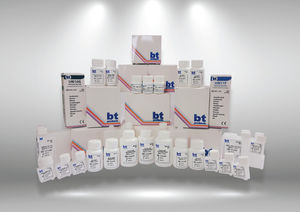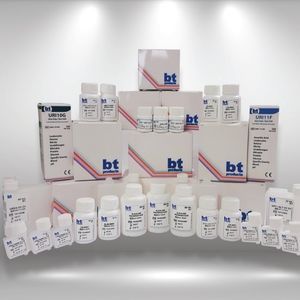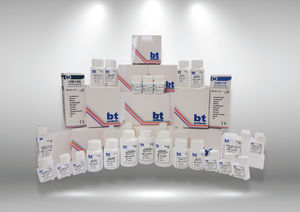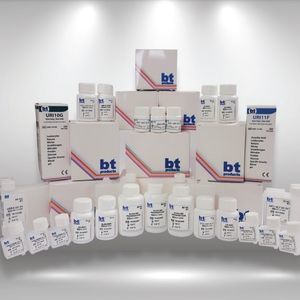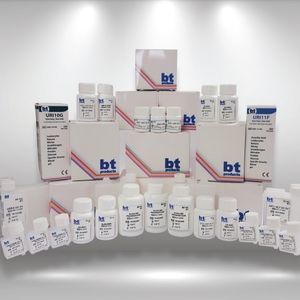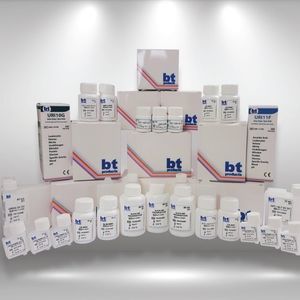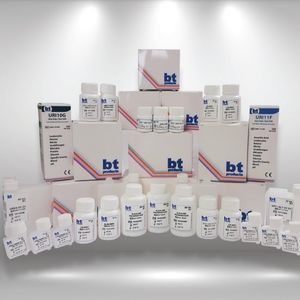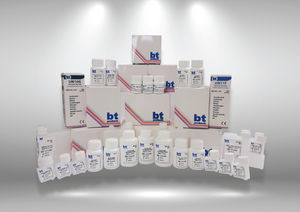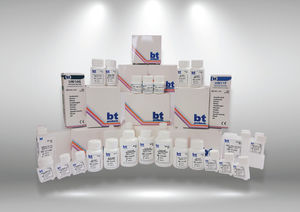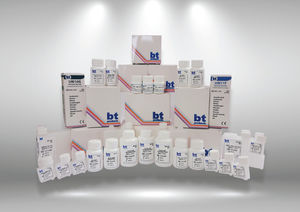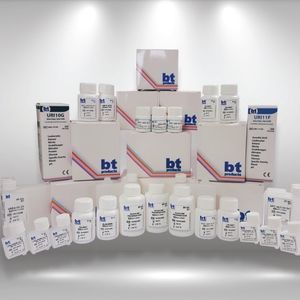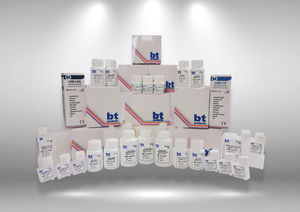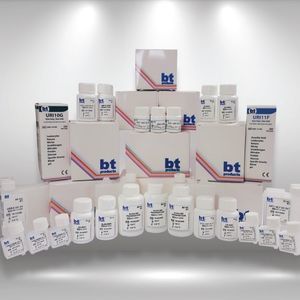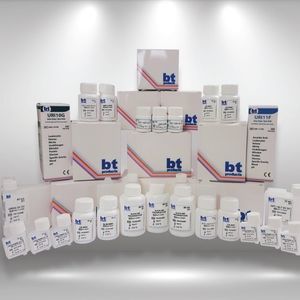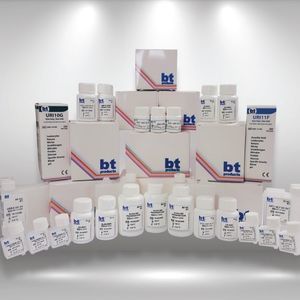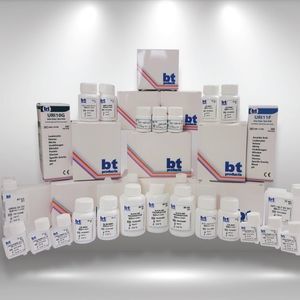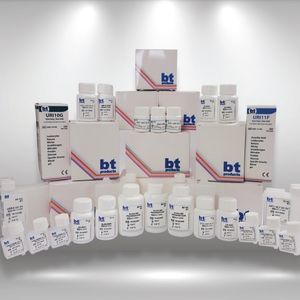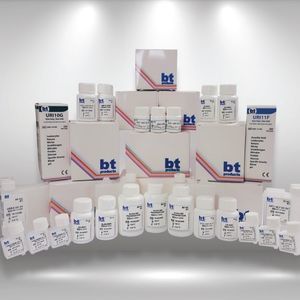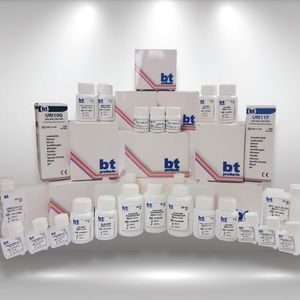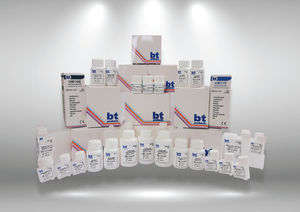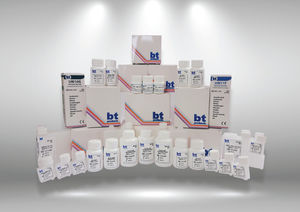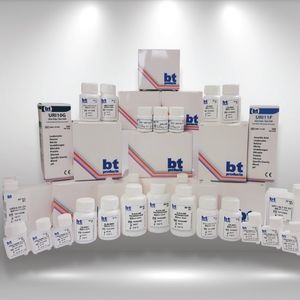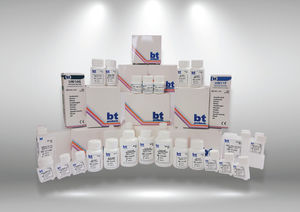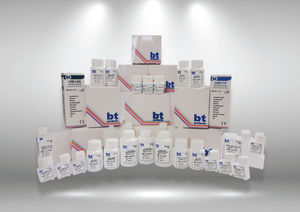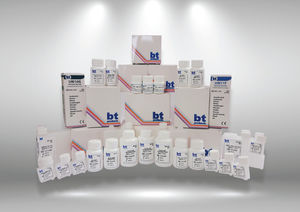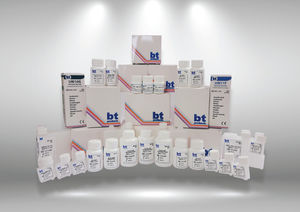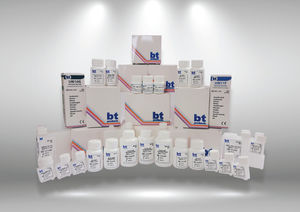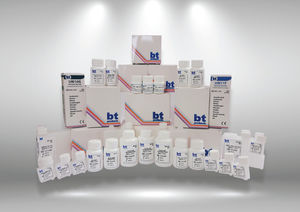
- Laboratory
- Laboratory medicine
- Enzyme reagent
- BILIMSEL TIBBI ÜRÜNLER
Enzyme reagent kit CK-101 seriesfor clinical chemistrycreatine kinasecopper
Add to favorites
Compare this product
Characteristics
- Type
- enzyme
- Applications
- for clinical chemistry
- Tested parameter
- creatine kinase, copper
- Storage temperature
Min.: 2 °C
(36 °F)Max.: 8 °C
(46 °F)
Description
For the in vitro quantitative determination of Creatine Kinase (CK) activity in human serum.
METHODOLOGY
In the presence of creatine phosphate, CK enzyme catalyzes the reversible phosphorylation of ADP, to form ATP and creatine. The enzyme hexokinase (HK) then catalyzes the phosphorylation of glucose by the ATP formed, to produce ADP and glucose-6-phosphate (G-6-P). The G-6-P is then oxidized to 6-phosphogluconate, with the simultaneous production of NADH.
Precautions:
1. This reagent is for in vitro diagnostic use only.
2. Reagent may be irritating to skin. Flush skin with water if contacted.
3. This reagent contains sodium azide as apreservative.Do not ingest.In a dry state. may react with lead and copper plumbing to form highly explosive metal azides.Upon disposal , flush with a large volume of water to prevent azide build up.
Reagent 1:
H360d May damage fertility or the unborn child
P308+313 If exposed or concerned:get medical advice /attention
Wear suitable protective equipment
REAGENT PREPARATION
Reagents are supplied in a two vial, ready to use, liquid form.
For some analyzers, the reagents can be combined to make a working solution by mixing 4 parts of Reagent 1 with 1 part of Reagent 2 (e.g., 20mL Rgt 1 to 5mL Rgt 2).
REAGENT DETERIORATION
THE REAGENT SHOULD NOT BE USED IF:
1. The reagent has an absorbance greater than 0.5 at 340 nm against water.
2. The reagent fails to meet stated parameters of performance.
INTERFERENCES
Studies to determine the level of interference for hemoglobin, bilirubin, and lipemia were carried out. The following results were obtained:
Catalogs
No catalogs are available for this product.
See all of BILIMSEL TIBBI ÜRÜNLER‘s catalogsOther BILIMSEL TIBBI ÜRÜNLER products
Universal Bottled Clinical Chemistry Reagents
Related Searches
- Solution reagent kit
- Protein reagent kit
- Diagnostic reagent kit
- Laboratory reagent kit
- Enzyme reagent kit
- Histology reagent kit
- Dye reagent
- Antibody
- Buffer solution reagent kit
- Clinical chemistry reagent
- Quality control reagent kit
- Clinical chemistry analyzer
- Virus reagent kit
- Clinical reagent kit
- Automatic clinical chemistry analyzer
- Test strip
- Benchtop clinical chemistry analyzer
- Tissue reagent kit
- Electrolyte reagent kit
- Colorimetric reagent kit
*Prices are pre-tax. They exclude delivery charges and customs duties and do not include additional charges for installation or activation options. Prices are indicative only and may vary by country, with changes to the cost of raw materials and exchange rates.



